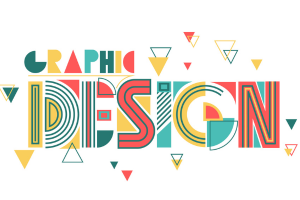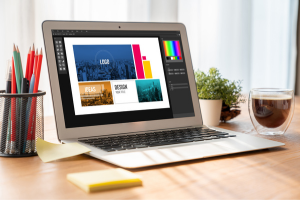In the contemporary world of quick digital advancement, website design goes beyond decoration; it is more of a strategic approach through which audiences can perceive, interact with the content, and eventually make decisions to purchase from the brand. A great website today is no longer just a visiting card for modern brands but indeed becomes the very foundation upon which your online presence stands.
Irrespective of whether you are a new startup coming in with a bang or a well-established corporation intending to maintain relevance, this ultimate guide for creating website designs will assist you in creating that meaningful experience, fit for the audience, allowing you to see real results.
What is a Website Design?
Website design is a process through which internet content is planned, created, and organized. It goes beyond the aesthetics of a site; even about how it actually operates. A good web design will rely heavily on usability, user experience (UX), layout, responsiveness, and an overall performance. It should not only attract the eye, but it must also perform its functions well and check off the ones defined by its brand’s identity, values, and objectives.
Most importantly, then, design speaks to those who view your company’s products-better still, services. It is your voice, lights all the offers, and makes an impression.
Why Web Design Still Matters to Modern Brands
1. Making the First Impression
A statistical study shows how the first impression of your website forms within a minuscule 0.05 second. That breaks down into almost no sort of time to show them an attractive face. A neat and modern design builds trust and encourages the visitor to stay around for a little longer.
2. Fits Brand Identity
Your website vividly represents your brand because everything, from color schemes to typography, layout, and imagery, should talk the talk of your brand voice and messaging. A well-thought-out concept in design translates into strong-minded recognition and clientele loyalty.
3. Drive Conversion
Good design is more than just aesthetic beauty, it is something that works in conjunction with it. With the ultimate conversion system in place through well-directed user geolocation and emphasized clicks to opt-ins, and in return, a super frictionless user journey, our client will experience higher conversion levels.
4. Induct SEO and Visibility
They are mutually inclusive. Clean code and fast loading times contribute to search engine optimization, thereby positively affecting a site’s visibility. Very powerful for both users and crawlers in deciphering SEO-friendly designs.
Key Essentials of a Web Design
1. Responsive Design
Over 60% of web traffic comes from mobile devices. Therefore, responsive design is a must. Your website must look great and render correctly across different screen sizes like smartphones, tablets, laptops, and desktops.
2. Intuitive Navigation
Good navigation is not ambiguous; it aligns with the very best possibilities for user experience with clear menus, strong hierarchy of pages, and easy access to the most important information, such as way in contact information, and product/service pages.
3. Visual Hierarchy
Use variations in size, color, contrast, and placement to help guide the reader’s eye to the most important things on your page first. Headlines, CTAs, and imagery should pop off the page and encourage users to take a particular action.
4. Fast Loading Times
A slow website is a deal-breaker when it comes to user experience. Achieve a loading speed under 3 seconds by optimizing images, minimizing server requests, and adopting modern code.
5. Accessibility
To avoid excluding anyone, modern brands should target inclusive websites accessible to all their users, including those with disabilities. If you put a few extra tags in just part of the source code and alter the alt text, good work is nearly done because these responsive qualities are more inclusive.
Using Website Design for Branding
Your brand is not just your logo—it is an experience. How does website design contribute to making your brand message louder?
1. Color Palette
Colors are emotional and vital to branding. Make sure your color palette communicates your brand persona: are you fierce and up-and-doin, maybe calm, professional, and trusted, or playful and creative?
2. Typography
Fonts suggest variations in tone and connotation. A fresh sans-serif typeface may communicate modernity, while a serif typeface conveys tradition and trust. Keep it to 2–3 typefaces for an efficient and cohesive design.
3. Imagery
Strong, on-brand visuals help to tell your story. Avoid generic stock images and invest in custom images or illustrations; it makes a difference when you become the story of your product or service line.
4. Voice and Tone
Write copy that sounds like you. Whether your brand conveys formality, wit, empathy, or authority, make the same voice/dialect consistent across all pages.
Trends in Website Design for 2025 and Beyond
1. Dark Mode
Easier on the eyes, it offers a more modern touch to a layout. Many trendsetting brands have dark/light options, a toggle for you to be in control.
2. Micro-Interactions
These are anything from a hover effect and a button click or scroll-triggered animations to animated, engaging experiences.
3. Bold Typography
As an instant visual graph, big fonts with powerful messages scream for attention while confidently exuding their intended message.
4. 3D Visuals and Immersive Experiences
Advancements in web technology have made 3D graphics and immersive scroll effects an integral part of positively influencing user experience and giving it a dramatic shift.
5. Minimalism with Purpose
Users want an attractive display of minimalism. Keep your design quality clean and focus on what matters most: your message.
Website Design Best Practices for Modern Brands
1. Design with the User in Mind
Think audience. What do they need? How can you make this easier for them to reach? User-centric design tends to give better engagement.
2. Optimize for Speed
Optimization strategies around speeding up your website include compressing images, lazy loading, and frameworks like Next.js or Gatsby.
3. Keep Content Scannable
Keep paragraphs short, use bullet points, and include visuals to break up the text because the majority of users prefer to scan, not read through. This way, they can find the important points very quickly.
4. Prioritize Mobile
Take an approach that involves designing for mobile-first, prioritizing function, and form of performance on small screens.
5. Test and Iteration
The launch is just the beginning! Use analytics, heatmaps, user feedback, and qualitative comments for constant improvement.
6. Website Design Tools and Platforms
If you’re looking to build or redesign a site, below are some passed-down tools for consideration:
Design Platforms: Figma, Adobe XD, Sketch
Website Builders: Webflow, Wix, Squarespace
Content Management System Platforms: WordPress, Shopify, Ghost
Performance Testing Tools: Google PageSpeed Insights, GTmetrix
UX Testing Tools: Hotjar, Crazy Egg, UserTesting
Together with a professional design team such as Maploon.com, you might create a custom website that earns your brand the recognition it deserves.
7. Engaging with a Website Design Agency
Hiring a design agency saves valuable time and will guarantee the quality of your project while infusing a fresh strategic outlook into your brand. Below are a few considerations you must keep in mind for a perfect match:
Robust portfolio with fairly extensive experience across diverse industries
Proven grasp of branding and marketing
Ability to engage in collaborative and transparent practices
An arrangement for post-launch support and maintenance
we excel at creating websites capable of converting brands into online powerhouses. Our team creates solutions that are visually stunning, easy to use, and able to face any future challenges from the time of inception through the launch.
Conclusion
Website design is not just about how the site looks; it is more about how the site behaves, feels, and tells the brand story. In this digital-first era, the website is usually the first and sometimes the only interaction a customer may undertake with a given brand. So make the most of it.
Today’s brands need more than just a good-looking home page. They need the kind of strategic design that is user-centered, conversion-focused, and deeply integrated with their brand identity. Whether you are starting fresh or giving an old site a facelift, using this guide will help you build one hell of an online presence.






